Precious Metals
UNDERSTANDING JEWELLERY HALLMARKS & WHAT THEY MEAN FOR VALUE
A diamond cut is a key factor to consider when choosing your next piece of diamond jewelry.
By Chinwe, Chief Creative Officer
Jewellery Hallmarks Explained: Decode Marks to Unlock Value & Authenticity
Every precious piece of jewelry tells a story — not just through its sparkle or design, but through the tiny marks engraved into its metal. These seemingly insignificant symbols, known as jewellery hallmarks, are the hidden language of authenticity, quality, and craftsmanship. From antique family heirlooms to modern engagement rings, hallmarks have been used for centuries to protect consumers, preserve heritage, and certify the true worth of precious metals. Yet, despite their importance, most people barely notice them.
Understanding what these hallmarks mean is the key to unlocking the value of your jewelry collection. Whether you’re a passionate collector, a casual buyer, or someone looking to invest in gold, silver, or platinum pieces, this guide will help you see your jewelry in a completely new light — not just as adornment, but as a record of purity, origin, and artistry.
In this comprehensive exploration of jewellery hallmarks, you’ll learn how to read, interpret, and appreciate the symbols that define the jewelry world’s credibility:
Why Jewellery Hallmarks Matter – We’ll uncover why hallmarking systems exist, how they safeguard buyers and sellers, and how they serve as proof of authenticity and metal purity.
The Anatomy of Jewellery Hallmarks – Dive deep into the structure of hallmarks and discover what each component — from purity numbers to maker’s marks and assay symbols — reveals about your piece.
How Hallmarks Differ Across Metals & Regions – Explore hallmarking systems around the globe, from Britain’s centuries-old Assay Offices and Europe’s Convention marks to India’s BIS certification for gold and silver.
From Hallmarks to Value – Learn how certain marks, rare fineness levels, and renowned maker signatures can significantly increase your jewelry’s market and sentimental worth.
Common Hallmark Misconceptions & Pitfalls – Avoid the traps of counterfeit stamps, over-polished pieces, and mismatched components that can mislead even experienced buyers.
Using Jewellery Hallmarks When Buying or Selling – Gain practical, expert-level advice on how to verify hallmarks, research maker’s marks, and assess authenticity before making any purchase or sale.
By the end of this guide, you’ll not only be able to identify a hallmark — you’ll understand its story. You’ll see how each engraving connects your jewelry to a larger narrative of history, craftsmanship, and trust. Most importantly, you’ll gain the confidence to recognize genuine value in every piece you own or desire.
In the world of fine jewelry, knowledge truly is power — and jewellery hallmarks are where that knowledge begins.
-
Choupette Ring – 18K Gold 2.6ct
18K Gold
£3,950 Select options This product has multiple variants. The options may be chosen on the product page -
Cumbre Necklace – 18K Gold Plated Sterling Silver
18K Gold Plated Sterling Silver
£650 Select options This product has multiple variants. The options may be chosen on the product page -
Serendipity Cuff Earrings – 18K Gold Plated Sterling Silver
18K Gold Plated Sterling Silver
£260 Add to cart
Why Jewellery Hallmarks Matter
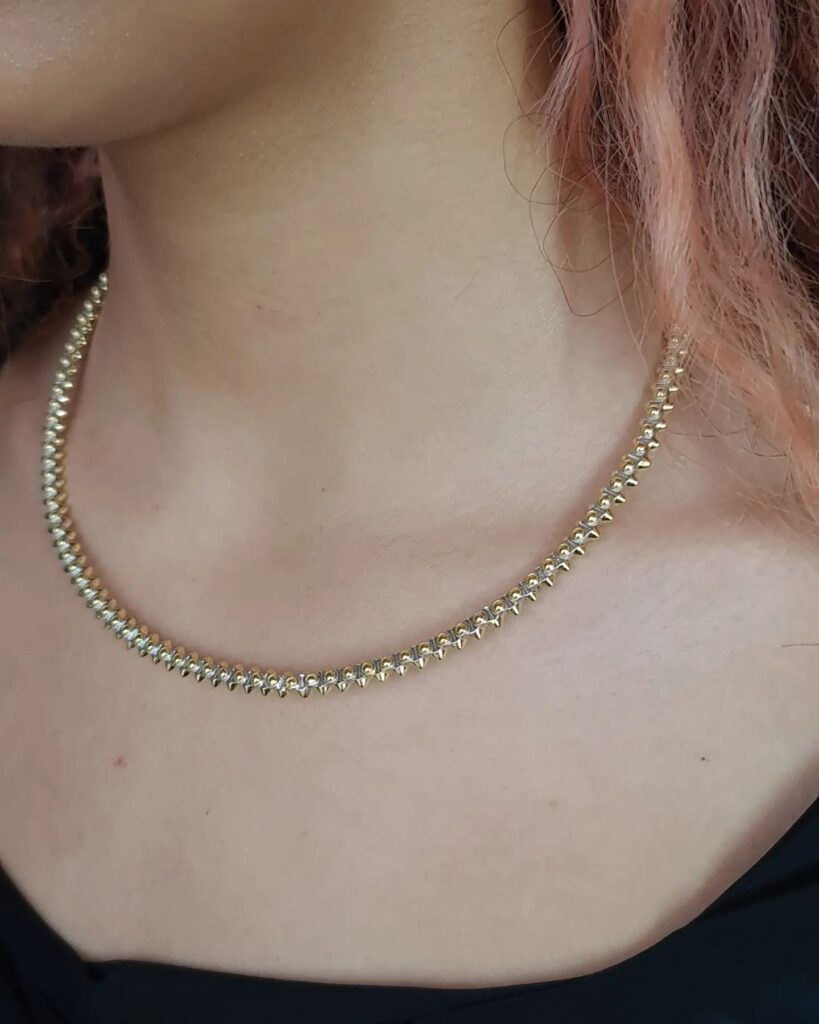
Every piece of fine jewelry carries a secret signature — a tiny stamp that holds enormous meaning. These stamps, known as jewellery hallmarks, are not just decorative touches added by the maker; they are official guarantees of authenticity, purity, and provenance. In a market where the visual allure of gold, silver, and platinum can easily deceive, hallmarks stand as the most trusted indicators of value. They tell you not only what your jewelry is made of but also who stands behind it.
At its core, a hallmark is a certification of purity and standard. When a piece of jewelry is submitted to an official assay office or authorized body, the metal is tested to ensure it meets the declared fineness standard — for instance, 18-karat gold (marked as “750”), 14-karat gold (“585”), or sterling silver (“925”). Once verified, the item receives its hallmark, assuring the buyer that the precious metal content is exactly what it claims to be. Without this stamp of integrity, the buyer must take the seller’s word — a risky proposition in a trade where visual differences between metals can be nearly impossible to spot.
But jewellery hallmarks go beyond just confirming metal purity; they are the foundation of trust in the jewelry industry. Counterfeit or misrepresented jewelry is not uncommon, especially online or in markets where regulations are loose. A properly hallmarked item instantly communicates legitimacy. It tells the buyer that the piece has undergone an independent evaluation and meets international or national standards. For collectors and investors, this small engraving is often the difference between a cherished heirloom and a regrettable purchase.
Hallmarks also serve as historical identifiers, offering a fascinating glimpse into the past. Many countries have hallmarking systems dating back centuries, such as Britain’s hallmarking laws that originated in the 1300s. Each hallmark can reveal when and where a piece was assayed, and even which artisan or company made it. For antique jewelry enthusiasts, these details are invaluable clues that help trace a piece’s lineage and authenticate its era. A single hallmark can turn a beautiful piece into a documented artifact with cultural and historical value — and that heritage often translates to higher monetary worth.
Equally important, hallmarks protect craftsmanship and reputation. Reputable jewelers and designers take immense pride in hallmarking their creations. Their maker’s mark — a unique symbol or initials — acts as their personal signature, representing quality, ethics, and artistry. This mark assures the buyer that the piece meets both the brand’s and the industry’s standards. It’s why leading luxury houses like Cartier, Tiffany & Co., and Bvlgari hallmark every creation: to preserve transparency and protect their legacy of excellence.
Lastly, jewellery hallmarks have a direct impact on resale and investment value. Pieces with clear, complete, and verifiable hallmarks are easier to authenticate, appraise, and insure. In contrast, jewelry without hallmarks — or with illegible or missing ones — often faces reduced appraisal rates or requires additional testing. Simply put, hallmarks make your jewelry more trustworthy, traceable, and valuable in the eyes of buyers, collectors, and insurers alike.
In essence, jewellery hallmarks matter because they bridge beauty and truth. They confirm that behind every shimmer lies substance — that what dazzles on the surface is genuinely precious beneath. Whether you’re buying, selling, or simply admiring your collection, recognizing and respecting hallmarks ensures that your jewelry’s worth is more than just skin-deep.
The Anatomy of Jewellery Hallmarks
At first glance, the tiny marks engraved inside a ring band or discreetly placed on a necklace clasp may seem like mere ornamentation. But for anyone who understands their language, jewellery hallmarks are a treasure map of information — each symbol, number, or letter revealing something vital about the piece’s origin, metal quality, and authenticity. Understanding the anatomy of these hallmarks can transform the way you see your jewelry, helping you recognize its true story and value.
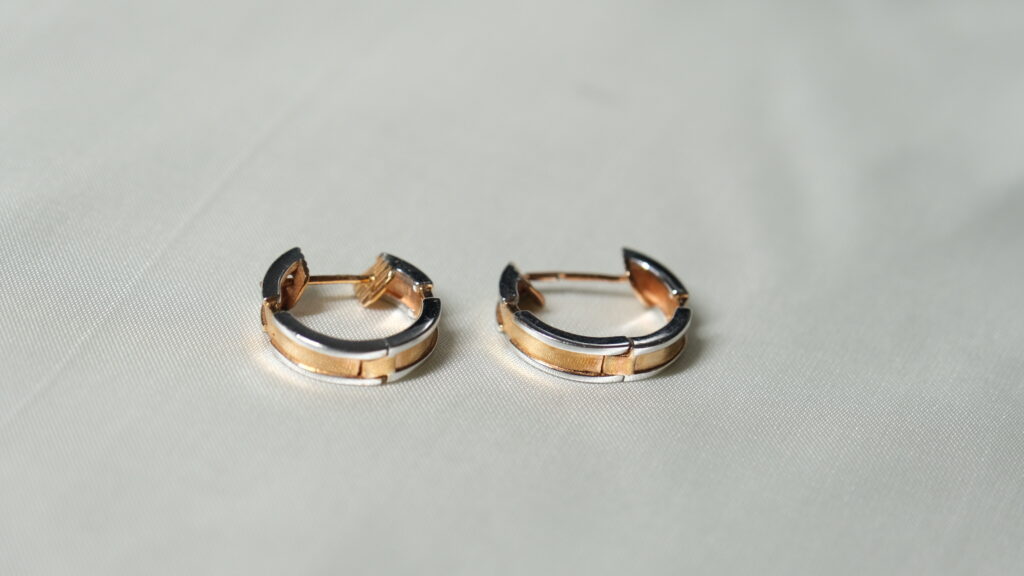
A traditional hallmark typically consists of several key components, each serving a distinct purpose. While the order and design may vary by country or assay office, most systems include these five fundamental elements:
1. The Purity or Fineness Mark
This is the most universally recognized element of a hallmark. It indicates the purity of the metal — essentially, how much of the piece is made from the stated precious metal versus other alloys. For example, a gold piece stamped “750” signifies 18-karat gold (75% pure gold), while “585” means 14-karat, and “375” represents 9-karat gold. Sterling silver is typically marked “925,” meaning 92.5% pure silver. Platinum pieces often bear “950” or “900”. These numerical values are known as millesimal fineness marks and provide precise, globally understood information about purity.
2. The Maker’s Mark (or Sponsor’s Mark)
This mark identifies the manufacturer, designer, or company responsible for submitting the item for hallmarking. It’s a form of signature — a promise of accountability and pride in craftsmanship. Usually composed of initials or a unique symbol, the maker’s mark can be a fascinating clue for collectors and historians. In the UK, for example, the maker’s mark is registered with the Assay Office and uniquely tied to the individual or business. For luxury brands such as Cartier or Tiffany & Co., this mark not only guarantees authenticity but also adds brand prestige to the piece.
3. The Assay Office Mark
Every country with an official hallmarking system has designated assay offices that test and certify precious metals. The assay office mark tells you where the item was tested and approved. In the UK, for instance, a leopard’s head represents London, an anchor stands for Birmingham, a rose for Sheffield, and a castle for Edinburgh. These symbols act as geographical identifiers — confirming where the verification took place and, sometimes, even hinting at a piece’s stylistic heritage.
4. The Date Letter or Year Mark
Some hallmarking systems include a letter or symbol that indicates the year the item was assayed. In the British system, for instance, each year corresponds to a unique letter and font style that changes annually. This allows collectors to date a piece accurately, which is especially valuable for antique jewelry. A well-preserved date mark can transform a beautiful item into a traceable heirloom with historical significance.
5. Additional Marks or Symbols
Beyond these core components, you may find other symbols that give additional context. These could include commemorative marks (such as special anniversary symbols), import or export marks, or international convention marks like the Common Control Mark, used across several European countries. Some modern hallmarks may even include digital identifiers or QR codes linked to certification databases — a growing trend in the world of luxury jewelry verification.
Together, these marks form the complete “DNA” of a jewelry piece. Reading them correctly requires patience, good lighting, and sometimes a magnifier, but once decoded, they reveal vital truths: where your jewelry came from, who crafted it, how pure it really is, and when it was made.
In essence, the anatomy of jewellery hallmarks represents the meeting point between art and accountability. Each mark is a stamp of transparency in an industry built on beauty and trust. Understanding these details doesn’t just enhance appreciation — it empowers you to make informed, confident choices when collecting, purchasing, or passing down your most precious treasures.
-
Clustered Alternate Chain Necklace – 18K Gold, Rose Gold
18K Gold, Rose Gold
£4,438 Select options This product has multiple variants. The options may be chosen on the product page -
Cross Link Necklace – 18K Gold Plated Sterling Silver
18K Gold Plated Sterling Silver
£575 Select options This product has multiple variants. The options may be chosen on the product page -
Figure of Eight Chain Necklace – 18K Gold
18K Gold
£1,563 Select options This product has multiple variants. The options may be chosen on the product page
How Hallmarks Differ Across Metals & Regions
While the purpose of jewellery hallmarks is universal — to verify purity and authenticity — the way these marks appear can vary significantly depending on both the metal type and the country of origin. Each nation has developed its own traditions, symbols, and standards, shaped by centuries of craftsmanship and regulation. Likewise, each precious metal carries its own set of hallmarking rules and conventions. Understanding these variations helps collectors, buyers, and sellers identify where a piece came from, when it was made, and how its quality was guaranteed.
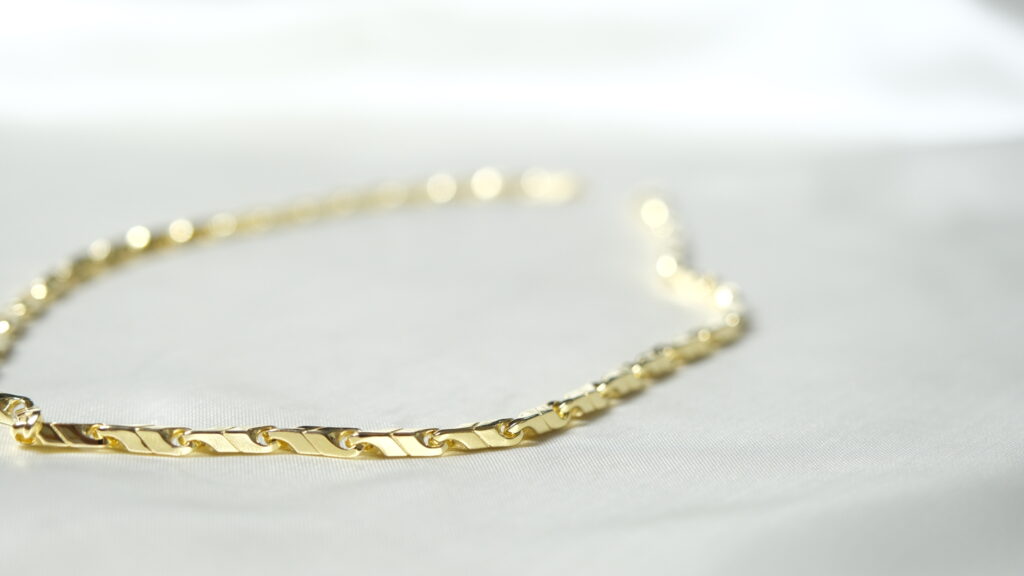
Hallmarks by Metal Type
Gold:
Gold has the richest and most standardized hallmarking history. In many regions, gold jewelry bears a millesimal fineness mark such as 375, 585, 750, or 916, representing 9K, 14K, 18K, and 22K respectively. In the United States, karat markings (e.g., 14K, 18K) are more common, while in Europe and the UK, numerical marks dominate. Some countries also include additional symbols — for instance, a crown often accompanies gold hallmarks in the UK to denote royal approval and authenticity.
Silver:
Silver hallmarks differ depending on purity and national standards. The most recognized silver standard globally is 925, signifying sterling silver (92.5% pure). In Britain, sterling silver has long been identified by the lion passant mark — a symbol of assured quality since the 14th century. Other notable purities include 800 (continental silver) and 958 (Britannia silver). In Mexico, you might see “Mexico 925” or the maker’s registration mark, while Scandinavian silver often features clean minimalist marks with local assay symbols.
Platinum and Palladium:
These metals, rarer and more valuable than gold, have distinct hallmarking systems. Platinum jewelry usually carries the fineness mark 950 or 900, sometimes accompanied by the letters “Pt” or “Plat.” The UK, for example, introduced mandatory hallmarking for platinum in 1975. Palladium — a newer precious metal in jewelry — often bears Pd950 or Pd500 stamps. Given their scarcity and density, clear hallmarking of these metals is crucial for accurate valuation.
Hallmarks by Region
United Kingdom:
The UK boasts one of the oldest and most detailed hallmarking systems in the world, dating back to 1300 AD. A complete British hallmark includes five parts: the maker’s mark, the metal fineness, the assay office symbol, the optional date letter, and sometimes a commemorative or import mark. Each of the four UK assay offices — London, Birmingham, Sheffield, and Edinburgh — uses its own unique emblem (leopard’s head, anchor, rose, and castle, respectively).
Europe:
Across continental Europe, hallmarking is harmonized under the Vienna Convention on the Control of the Fineness and Hallmarking of Precious Metal Objects. Many European nations use the Common Control Mark (CCM) — a tiny scale symbol accompanied by the metal’s fineness number. However, each country still maintains its own design traditions. For example, France uses an eagle’s head for gold and a Minerva head for silver, while Switzerland employs the St. Bernard dog’s head as a hallmark of authenticity.
United States:
The U.S. does not require official hallmarking by law, relying instead on manufacturer responsibility. Jewelers often stamp items with purity marks (e.g., 14K, 18K) and sometimes include their own registered trademarks or the word “Fine.” While less regulated, the Federal Trade Commission (FTC) enforces truth-in-advertising standards to ensure markings accurately reflect metal content.
India:
India’s hallmarking system, governed by the Bureau of Indian Standards (BIS), is among the most advanced in Asia. The BIS hallmark includes the BIS logo, fineness number, an assay center mark, and a unique six-digit alphanumeric HUID (Hallmark Unique Identification) code. Since 2021, hallmarking of gold jewelry has been made mandatory in most regions, significantly boosting consumer confidence.
Other Regions:
Countries like Canada, Australia, and South Africa often blend British traditions with local adaptations, maintaining the purity mark and maker’s signature but modernizing design and verification methods.
Across all these systems, the goal remains the same — to make jewellery hallmarks a global language of trust. By learning to recognize these regional nuances, you gain not only the ability to authenticate your jewelry but also a deeper appreciation for the cultural craftsmanship behind every mark.
From Hallmarks to Value
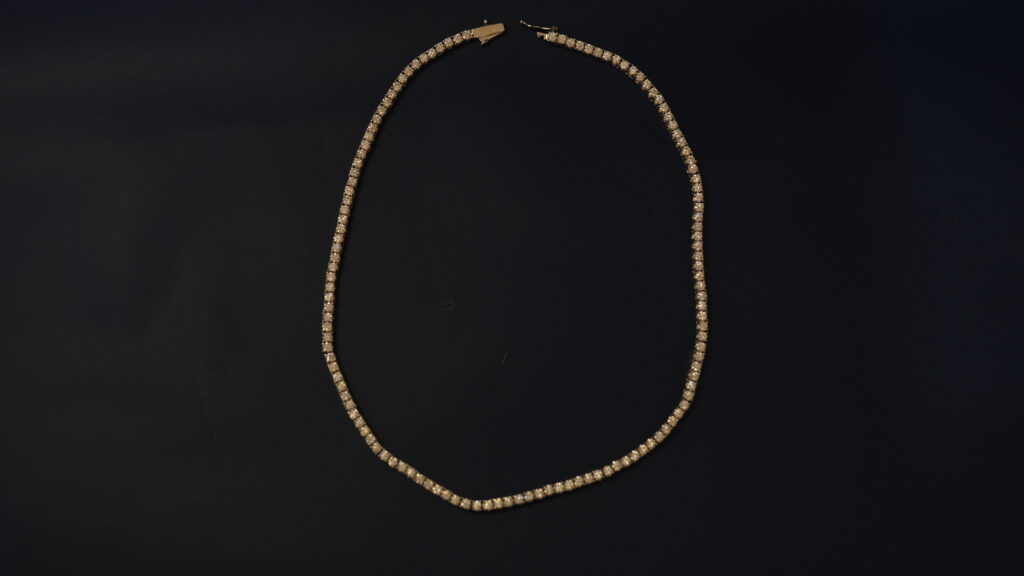
When it comes to determining the worth of a piece, jewellery hallmarks are far more than decorative engravings — they are the foundation of value, trust, and transparency in the jewelry world. Every hallmark tells a story of purity, craftsmanship, and provenance, and understanding these hidden messages can make all the difference between a wise investment and a costly mistake.
At its core, the value of fine jewelry rests on three pillars: metal purity, maker identity, and authenticity — all of which are communicated through hallmarking. The first and most direct indicator of value is metal fineness, often represented as a three-digit number within a hallmark. For instance, “750” denotes 18-karat gold, or 75% pure gold, while “925” marks sterling silver, composed of 92.5% pure silver. Platinum, the rarest and most durable of all precious metals, is typically stamped “950,” meaning it contains 95% pure platinum. These figures are more than technical specifications — they represent tangible value, influencing not only the piece’s intrinsic worth but also its durability and desirability over time.
Equally important is the maker’s mark, which often holds hidden prestige. Jewelry created by renowned designers or heritage houses such as Cartier, Tiffany & Co., or Van Cleef & Arpels can command far higher prices than unbranded equivalents, even when made from the same materials. A hallmark bearing a famous maker’s initials or signature emblem signals quality craftsmanship and brand legacy — both of which translate directly into value appreciation. For collectors and auction houses, tracing a hallmark back to its maker can reveal the piece’s origin story, placing it within a lineage of artistry and innovation.
Assay office marks and date letters add yet another layer of significance. These symbols authenticate that the jewelry was tested and verified by an official regulatory body, ensuring that the claimed purity is legitimate. Older or discontinued assay marks can also heighten a piece’s value by placing it within a specific historical context. For instance, a hallmark from London’s Goldsmiths’ Hall in the early 1900s instantly elevates an Edwardian bracelet’s desirability — not just as an ornament, but as a collectible artifact.
Beyond their technical function, jewellery hallmarks also influence emotional and cultural value. They preserve a tangible connection to history, heritage, and tradition. A hallmark engraved decades or even centuries ago transforms a piece into a storyteller — a physical record of its journey through time, owners, and craftsmanship eras.
For investors and enthusiasts alike, learning to interpret these small details can be profoundly empowering. Hallmarks can expose reproductions, validate appraisals, and even guide smarter purchasing decisions. In a market where design trends come and go, hallmark literacy remains the ultimate tool for identifying pieces that hold — and often increase — their value.
In essence, understanding jewellery hallmarks allows you to look beyond the surface shine and appreciate the invisible guarantee of authenticity and worth that lies beneath. They are the jewelry world’s silent promise: that what you hold is not just beautiful, but genuinely valuable.
-
Amoure Necklace – 18K Gold Plated Sterling Silver
18K Gold Plated Sterling Silver
£550 Select options This product has multiple variants. The options may be chosen on the product page -
Amoure Necklace – 18K White/Yellow Gold Plated Sterling Silver
18K Gold, Rhodium Plated Sterling Silver
£550 Select options This product has multiple variants. The options may be chosen on the product page -
Serendipity Ring – 18K Gold Plated Sterling Silver
18K Gold Plated Sterling Silver
£185 Select options This product has multiple variants. The options may be chosen on the product page
Common Hallmark Misconceptions & Pitfalls
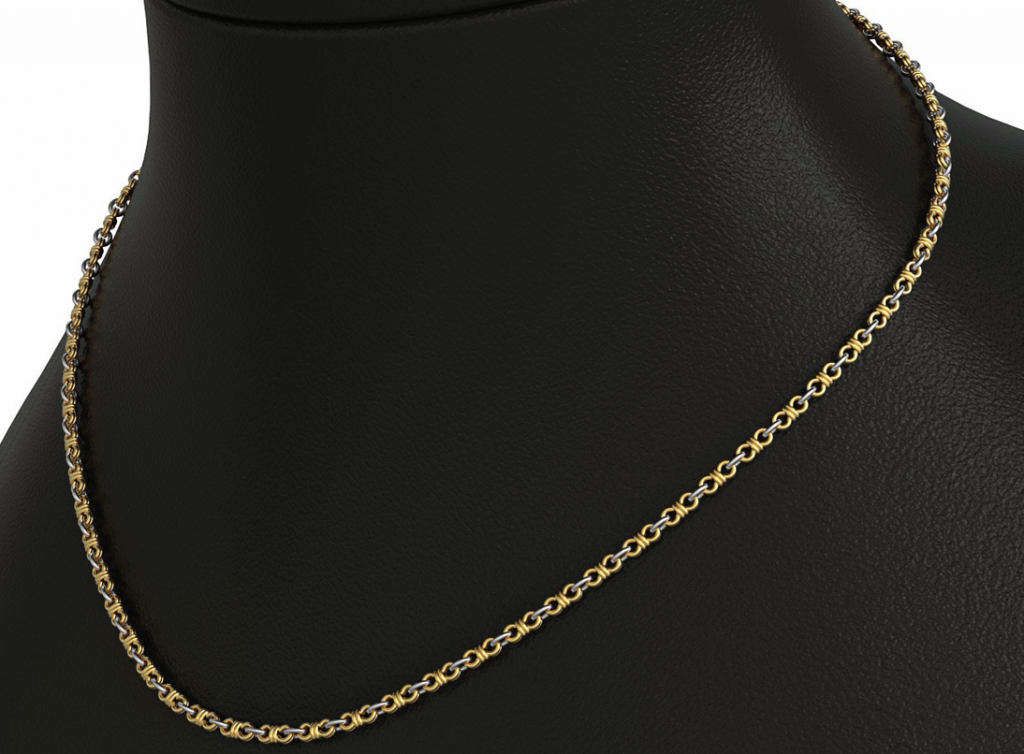
Even with centuries of regulation and global standardization, jewellery hallmarks remain one of the most misunderstood aspects of fine jewelry. Their tiny size, complex symbols, and regional variations make them both fascinating and confusing. While hallmarks are designed to protect buyers, misconceptions often lead to overconfidence, misinterpretation, or even unintentional purchases of counterfeit or misrepresented pieces. Understanding these pitfalls is essential to making informed decisions — whether you’re collecting heirlooms or shopping for a new treasure.
One of the most common misconceptions is the assumption that every mark on jewelry is a hallmark. In reality, jewelry can bear several different kinds of markings — including manufacturer logos, design numbers, or retail stamps — that are not official hallmarks. Only marks issued or approved by an authorized assay office or hallmarking body confirm the purity and authenticity of precious metals. A piece stamped “18K” by a manufacturer, for instance, might not have been independently verified unless it also bears the official assay mark or certification symbol.
Another pitfall lies in confusing country-specific hallmarking systems. For example, the UK’s hallmarking tradition includes a combination of purity marks, assay office symbols, and date letters — while the US system often relies more on manufacturer responsibility and karat stamps without mandatory third-party verification. Similarly, India’s Bureau of Indian Standards (BIS) mark serves as official confirmation of gold purity, but pieces made before its introduction in 2000 may lack this mark altogether. Without understanding these regional nuances, even experienced buyers can misread or undervalue jewelry pieces.
A frequent mistake among collectors is to assume that older hallmarks automatically guarantee higher value. While antique pieces can be highly valuable, age alone does not determine worth — condition, maker, and craftsmanship quality matter just as much. Some vintage hallmarks can be faint, re-stamped, or even forged to mimic older designs. This makes professional authentication critical, especially when dealing with high-value or estate jewelry.
Over-polishing or resizing is another common issue that can obscure or distort hallmarks. In an attempt to restore a piece’s shine, aggressive cleaning can wear away fine engravings, making hallmark identification difficult or impossible. Similarly, resizing rings or altering chains can result in partial hallmark loss — which, unfortunately, can reduce resale value or complicate verification during appraisal.
The rise of counterfeit jewelry also presents a growing challenge. Advanced engraving techniques now allow counterfeiters to replicate hallmark symbols with near-perfect precision. Without proper magnification and expertise, it’s easy to mistake a fake stamp for a genuine one. That’s why it’s crucial to cross-reference suspected marks against official hallmark databases or consult a certified gemologist or appraiser when in doubt.
Finally, one subtle but important misconception is that jewellery hallmarks only matter for precious metals. While that’s their primary purpose, understanding them also helps identify mixed-metal compositions, plated items, and alloys — preventing buyers from overpaying for pieces that aren’t what they seem.
In essence, the world of jewellery hallmarks requires both curiosity and caution. The more you learn, the better you’ll be at distinguishing genuine craftsmanship from imitation, authenticity from illusion. Hallmarks were created to empower the buyer — but only those who understand them can truly benefit from their protection.
Using Jewellery Hallmarks When Buying or Selling
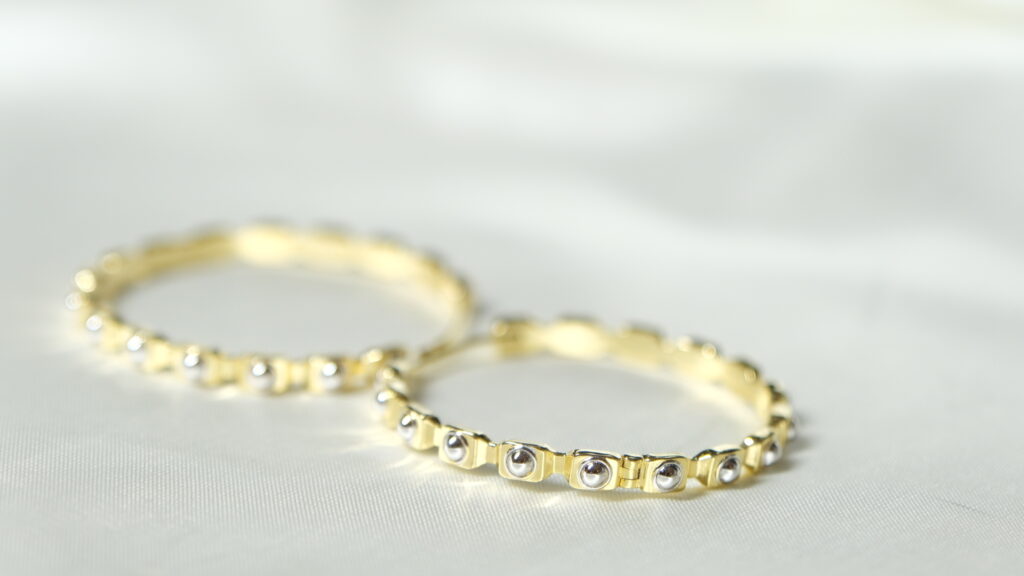
When it comes to buying or selling fine jewelry, knowledge is your strongest currency — and jewellery hallmarks are the key to unlocking that power. These discreet engravings not only confirm a piece’s authenticity but can also dramatically influence its resale potential. Whether you’re an investor, collector, or casual buyer, understanding how to use hallmarks strategically ensures that every purchase or sale is informed, transparent, and fair.
For buyers, the first step is always verification. Before falling in love with a design, take the time to inspect the hallmark using a jeweler’s loupe or magnifier. Look for key components: the purity mark, maker’s mark, and, where applicable, the assay office stamp. Each of these tells part of the story. The purity mark (for example, 750 for 18K gold or 925 for sterling silver) confirms the metal’s fineness, while the maker’s mark identifies who crafted the piece. If you see an assay symbol — such as the London Leopard’s Head or the BIS triangle for India — it signifies that the jewelry has been officially tested and certified.
However, not all hallmarks are created equal. Some regions, such as the UK, require strict third-party verification, while others rely on voluntary stamping by manufacturers. Buyers should always research the country’s hallmarking laws to understand what the marks truly guarantee. A 14K stamp on an American-made ring, for instance, might not carry the same assurance as a hallmarked piece from a British or European assay office. This distinction can greatly affect both price and long-term value.
When buying from private sellers or online platforms, it’s wise to cross-check hallmarks with reputable databases. Websites like the UK Assay Office Register or India’s BIS hallmarking portal allow you to verify whether a particular symbol or maker’s mark is legitimate. Reputable jewelers will also provide authentication certificates or documentation confirming the hallmark’s details. Never hesitate to request these records — a genuine seller will welcome transparency.
For sellers, understanding jewellery hallmarks is equally vital. Hallmarks act as your proof of legitimacy and can significantly enhance your piece’s market appeal. Before listing jewelry for sale, have it professionally appraised and cleaned to make the marks clearly visible. Photographing hallmarks up close adds credibility to online listings and reassures potential buyers that your piece is authentic.
If a hallmark is partially worn or unclear, consult a professional jeweler or appraiser rather than attempting to interpret it yourself. They can often identify the piece’s origin or age based on small design cues, ensuring that you price it accurately. Sellers of antique or estate jewelry, in particular, should never underestimate how much a well-documented hallmark can increase a piece’s perceived and actual value.
Finally, hallmarks can also influence negotiation power. A buyer who recognizes a rare maker’s mark or a discontinued assay symbol may be willing to pay a premium, while a missing or suspicious hallmark can lower the offer. In both cases, hallmark literacy ensures you’re negotiating from a position of knowledge, not uncertainty.
In essence, mastering jewellery hallmarks transforms you from a passive participant into an empowered expert in the buying and selling process. These small marks are more than just symbols — they’re your gateway to trust, transparency, and true value in the jewelry market.
-
Molten Necklace – 18K Yellow Gold, White Gold
18K Yellow Gold, White Gold
£6,313 Select options This product has multiple variants. The options may be chosen on the product page -
Serenity Band Ring – 18K Gold – 1.19ct
18K Gold
£2,775 Select options This product has multiple variants. The options may be chosen on the product page -
Trilogy Baguette Eternity Band Ring – 18K Gold – 0.74ct
18K Gold
£3,150 Select options This product has multiple variants. The options may be chosen on the product page
The Mark of True Value
In the glittering world of fine jewelry, jewellery hallmarks remain one of the few constants that bridge beauty with authenticity. They are the silent storytellers behind every gold bracelet, silver pendant, or platinum ring — tiny engravings that carry immense meaning. Understanding these marks transforms how you see your jewelry: not just as an ornament, but as a piece of verified history and craftsmanship.
Hallmarks speak the language of trust. They certify that your gold is truly gold, your silver genuinely sterling, and your investment worth what it claims to be. They link every piece to its maker, its metal purity, and often, its place in time — details that can elevate a jewel from ordinary to extraordinary. For collectors, hallmarks preserve heritage. For buyers, they ensure confidence. And for sellers, they add credibility that can significantly enhance market value.
Beyond financial worth, however, lies something even more precious — emotional assurance. Knowing that your jewelry is authentic gives it a deeper connection to your story. It allows you to pass it down with pride, knowing that the tiny symbols engraved within it protect its integrity for generations to come.
In today’s era of reproductions and fast fashion, hallmark literacy is both a form of empowerment and preservation. It ensures that the artistry and honesty of true jewelry-making are never lost. So the next time you hold a piece of gold or silver, take a moment to look closer. Those small symbols aren’t just markings — they are the marks of truth, tradition, and timeless value.
Understanding jewellery hallmarks isn’t just about identifying metals; it’s about appreciating the craftsmanship, culture, and credibility that make every piece truly priceless.

